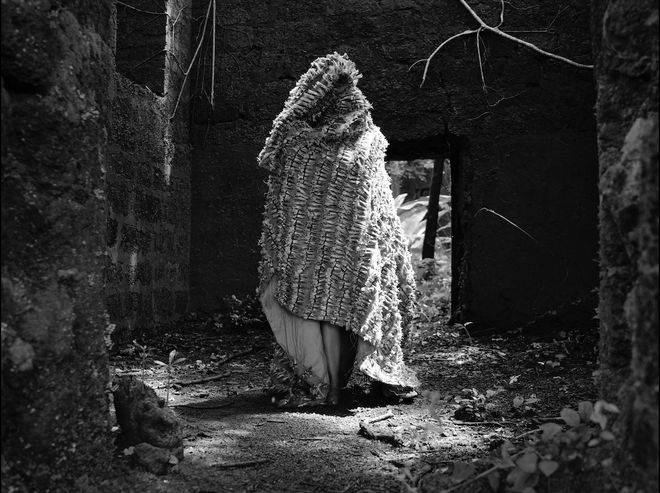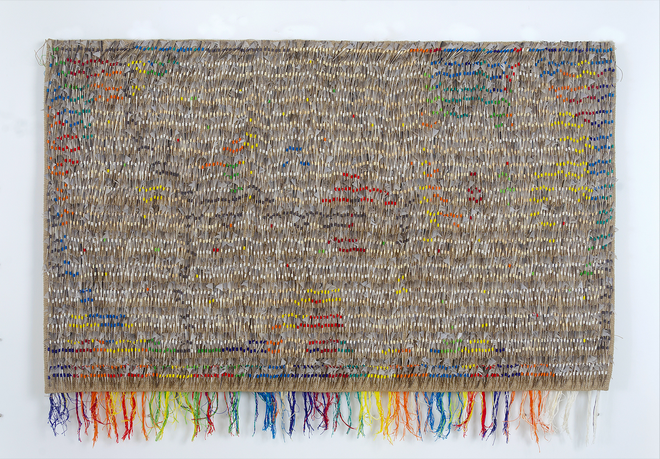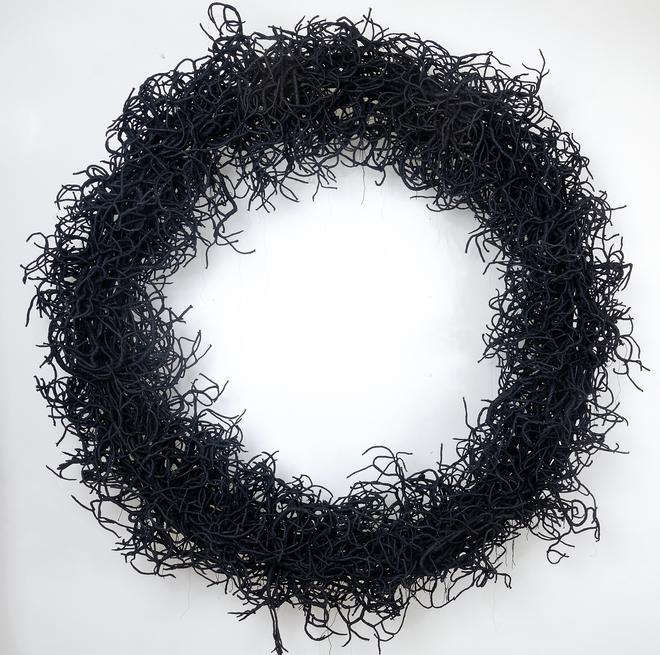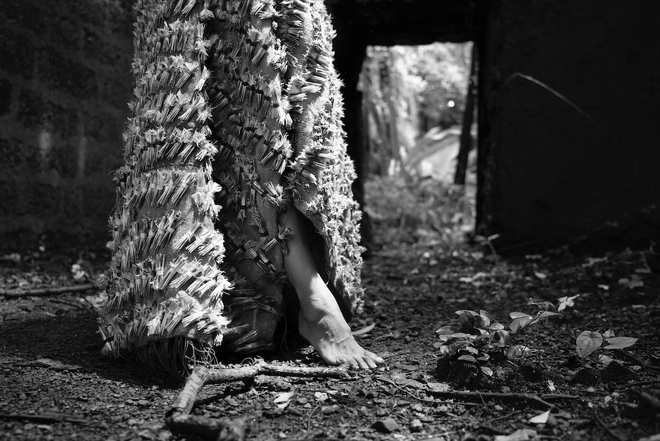In Mumbai’s parks, abandoned buildings and intersections where birds are fed, a wayfaring multi-disciplinary artist from Bandra, Sarika Bajaj, hunts for discarded feathers. These are her tools of expressionism as well as a medium for articulating ecological concerns. “I have been working with feathers for nearly 12 years,” she says, talking about her solo exhibition, titled Requiem, at Anupa Mehta Contemporary Art, Colaba. Starting from March 14, it will showcase two of her tapestries, photographs, a sculpture, a performance garment and a performance art video.

Sarika’s fondness for the unconventional medium stems from the innocuous childhood memories of feeding birds, which later metamorphosed into a niggling thought that delved into the impact of concretisation on the natural habitat of the feathered creatures. “I started studying about the cultural symbolism associated with birds, their role in the ecosystem, and eventually about how they are losing their habitat,” says Sarika, who began her career in art with presentations at Kunst Art Fair, Zurich 2011 and Scope Basel 2011. It is these thoughts that shape her artistic vocabulary, expanding on the narrative of humans’ interaction with Nature.

The arduous stockpiling of plumes takes years. Even longer is the process of treating them. So, Sarika sifts the quills from the vanes. “When I find a feather, I place it in boric powder and freeze it. Then, it is washed with hydrogen peroxide and dried. Afterwards, I cut the quill,” she adds. Sarika explored the idea of working with quills during the pandemic years, creating elaborate tapestries. The ones on display at Requiem are titled Remains and Remnants. “I started working on these two tapestries last year. The base is jute on which I tie bundles of quills with colourful threads,” explains Sarika. She calls the repetitive, rhythmic process “meditative”. “It takes thousands of quills to make one tapestry. At times, when I run out of feathers, I make use of other mediums, like ropes,” she adds. This experimentation reflects in the hoop-like sculpture after which the exhibition is named.

“It took me a couple of years to make this artwork. It has been made with rope, fabric and threads. It talks about silence, void and losses, both personal and ecological. It questions — how do you reconcile with what is lost and what’s left,” shares Sarika.
In quest of a dialogue that explores art in the realm of environmental consciousness, Sarika turns inwards. Her performance art video — titled Passage, shot by photographer Kalpit Gaonkar — she says is an extension of her becoming one with her creations and environment. “It was at the Bikaner House where I first did performance art, wearing my artwork. In the video, I have draped myself in two tapestries joined together. There’s a body of photographs too, also clicked by Kalpit, which is a documentation of the performance. It shows me wandering about in abstract topographies, questioning the meaning of my existence,” she shares.

Though art alone cannot be a catalyst for change, Sarika merits its propensity to create awareness. She signs off saying, “As I look inward, I assume that those who engage with my art will also look within to answer uncomfortable questions about our attitude towards the environment.”
The artworks are on sale and go up to ₹15 lakh (excluding taxes); on till April 30.







